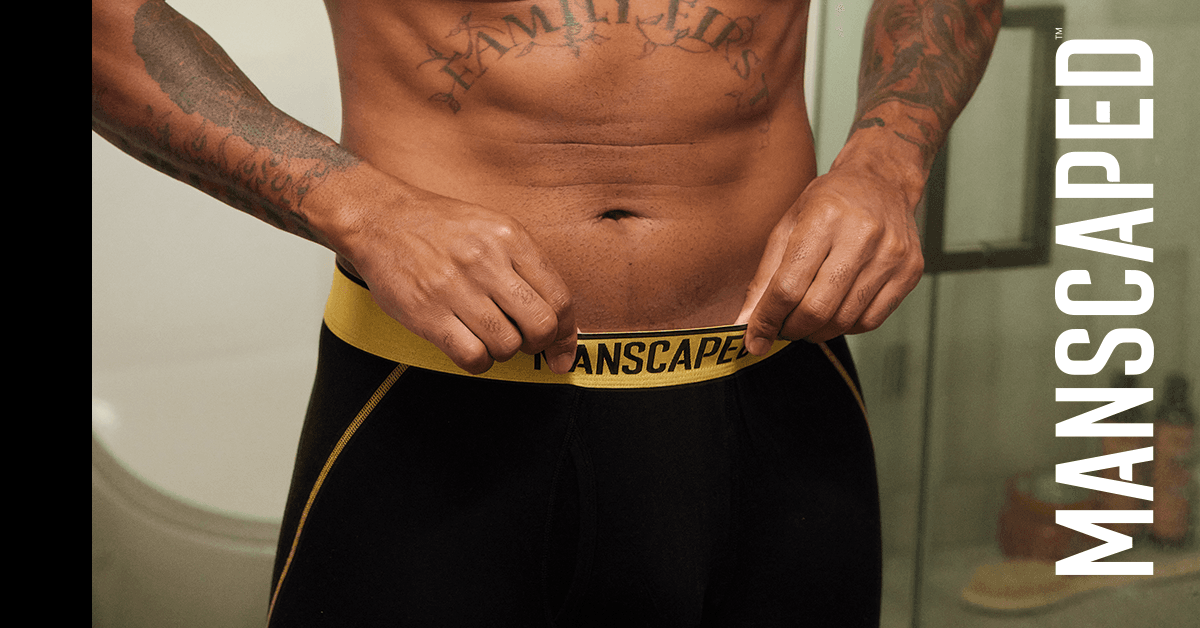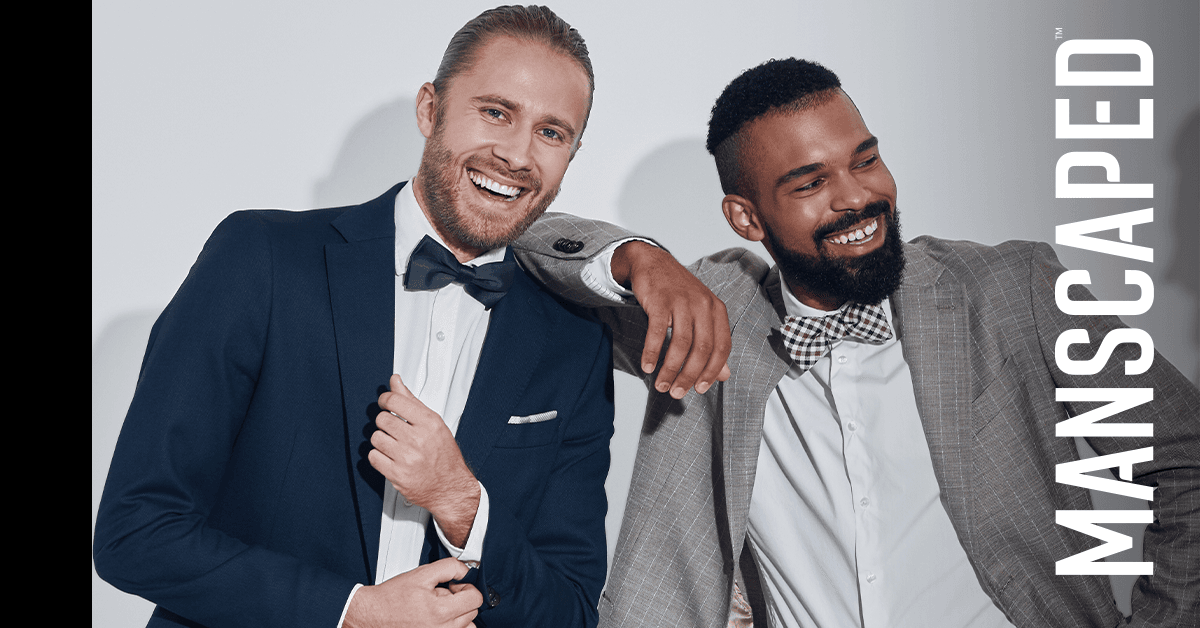
Every once in a while, you have to pull out all of the stops. You have to dress with everything you've got, and these occasions will often put you in a tuxedo. In these moments, you have to elevate yourself. You have to become more than the guy Googling how to get rid of pit stains and be something more. Buckle up, men. This guide will extend beyond our usual discussion of male grooming. We're going to go through tuxedo fashion trends for 2020.
Let's Talk About Formality
Making choices in a tuxedo mostly boils down to style, but unlike other forms of clothing, your tuxedo is going to be heavily informed by the event you're attending. Tuxedo styles change dramatically depending on the level of formality, and there is a good reason for that.
The tradition of dinnerware is about respect. You are going above and beyond with how you present yourself as a sign of respect to the event and the people attending. It even goes a step further. At a somber or ultra-serious occasion, an extension of your symbol of respect includes a willingness to take attention away from yourself.
This is why there is a bit of an inversion when it comes to being stylish and formal at tuxedo events. In the most formal settings, the convention conforms to traditional formal wear as much as possible. That means no lavish style choices and as little color as possible. This concept is why they call them black-tie events.
So, when you're thinking about your tux style, you want to consider formality. Are you expecting to attend a formal dinner where a politician gives a boring speech and asks you for money? Are you going to a classy but fun wedding? Are you dressing to the nines for a movie date at the mall theater (we've seen this happen)? Keep these ideas in mind as you learn about tuxes.

Jackets
The jacket is the centerpiece of the tuxedo. It all starts here, so let's get into the basics.
Single-Breasted vs. Double-Breasted Jackets
Let's start with a simple definition. When someone compares the two types of jackets, they're talking about buttons. Single-breasted designs have one row of buttons. Double-vested jackets have two rows. Any sports coat or standard suit jacket you've seen was probably single-breasted. There's a good chance that any double-breasted jackets you remember were parts of a uniform or possibly on a long overcoat.
Single-breasted jackets are way more common than their double-breasted counterparts. The double-breasted style dates back to Victorian England and military dress style, and modern double-breasted jackets tend to throwback to that style. As such, double-breasted jackets tend to be heavier, more formal, and often secondary.
In general, a single-breasted option is a safer and more stylish jacket for your tux. It's appropriate at a wider range of venues, and typically, your double-breasted jacket can serve as your formal overcoat when the weather necessitates.
That said, you can get some stylish and gorgeous double-breasted dinner jackets. They aren't heavy overcoats. Instead, they pay homage to the origin of the style while combining modern ideas. A double-breasted jacket can make heads turn at the right event. As such, double-breasted dinner jackets end up being less formal, which is a modern inversion. They might be better suited to wear at a winter wedding as opposed to an early fall wedding.
Lapels
Lapels are where you get most of the aesthetic variation in formal tuxedos. They come in different thicknesses, colors, and cuts. You can get notched lapels, wingtips, and so many more that it would be ridiculous to name them all. The lapel allows you to flex your style muscles and pick something interesting, fetching, and very you.
You see what comes next. Lapels, possibly more than any other part of your tux, will determine where it lies on the formality scale. If you're going for ultra-formal, the all-black, notched lapel is the staple.
Cut

In formal tuxedo talk, there's a small but important vocabulary lesson. The cut of the suit refers to how it is cut and altered for your body. The fit of the suit is how you choose to wear it after it is done being cut. We're going to focus on the cut because it matters more for choosing your tux.
The good news is that the cut usually doesn't bear a strong impact on formality. Regardless of the occasion, you want a tux that is properly tailored to make you look good. A bad cut will soften your edges and make you look sloppy, which is not a formal look.
Shoulders
Shoulders are carefully fitted to match the shoulders to the hips and make the head look right. Too much shoulder length and padding can make your head look small. Too little can turn you into a bobblehead.
Similarly, when the shoulders' cut isn't in line with the hips, it creates a subtle asymmetry that makes the whole thing look off.
Waist
Stylists argue about exactly how the waist should look. You have some who declare that it should sit a little below your natural waist. Others want it a little above the natural waistline. In either case, you should not confuse your waist with your hips. The waist of the jacket is supposed to help you look slim. It should highlight your physique and not make you look too much like an hourglass or completely flat.
When it comes to the waist cut, try on different jackets and do what you like. There's no solid rule here.
Pants
Technically pants will be called trousers for a tuxedo. That's more formal. Regardless, your tux trousers will not fit the same as jeans or other pants. They should come up to your waist rather than terminating at the hips. It might feel a little weird, but when you consider cummerbunds, vests, and the rest, you realize that this fit won't make you look like a geriatric waiting for the flood to come.
Waist vs. Hips
For the typical male build, your waist and your hips are going to be in contention. The perfect cut for one is not perfect for the other. The compromise is to have pants that are snug at the waist but not tight. As they go down to the hips, they should provide breathing room.
A good way to analyze the cut is to consider dancing in your trousers. Dancing may not be a part of all formal events, but it's common, and a good tux fits snugly without restricting movement. If you can't dance at the ball, it's a bad tux.
Length

Tux trousers depart from jeans when it comes to length as well. The ideal trousers will never cover your heel when standing (or sitting). Some argue that there should be a single break in the leg line when you stand. Others argue that there shouldn't be any break but that they should still touch the top of the shoe.
Either way, some sock will show, which is why they have to be properly matched. As for formality, there's no consensus on the leg break, so you can do what you prefer without worry.
Width
We already discussed the waist; this refers to the legs' width, particularly where they terminate. This one is tough because the rules change frequently. The safest rule to follow is that the feed of the pants should cover about two-thirds of your shoe. You can adjust from there as you think style dictates.
Pleats
Pleats are the folds you'll often see in tuxedo pants; this is one area where you want to think more about practicality than style. Pleats add a little give to the pants. They can accommodate a protruding stomach or conceal bulky objects in the pockets. Unnecessary pleats can mess up the shape of the trousers and ruin the shapely look. Match them to your build, and you'll be fine.
Vest
The vest is where a tux gets to show more of its creativity. Even though vests tend to look alike, how they show through the entire ensemble will vary and shine. The vest should be snug but not restrictive — even if you feel like it's highlighting your missed trips to the gym. It goes under the coat, and the snug fit will be ok.
The key to thinking about your vest is remembering that it is only partially visible next to the lapel. The jacket covers most of the vest; this allows you to incorporate interesting color combinations and design styles into the look. The coat, its lapel, and the combination with the vest make the primary aesthetic of a tuxedo.
Vests are not the most modern thing globally, but almost all modern styles are going to feature a vest. Because of the way they add color and visual dynamics to the look, they can hurt formality. When you're looking to be completely formal, drop the vest for suspenders and a cummerbund.
Shoes

As tuxedos are formal wear, they are typically matched with glossy black shoes, and those shoes tend to come in a handful of styles.
Far and away, the Oxford is the most common shoe to wear with a tuxedo. Oxfords have a tight, centered lace. When you think of formal shoes, you're probably already picturing Oxfords.
Another very common option is the Venetian slipper. These are laceless shoes but still standard and formal in their aesthetic.
A little less common is the opera pump. It's more of a leather or velvet loafer. It often won't be glossy, and it's the advanced shoe to wear with an extremely stylish tux.
Lastly, you can consider the slipper, these are also laceless, but they can break away from the Venetian form to add a little variety.
When in doubt or being ultra-formal, Oxfords and Venetian slippers are the best choices.
You'll also need to know how to match dress socks to your shoes.
Accessories
The tie is the first major choice, and there's an endless debate of bowtie versus long tie. There isn't a definitive answer. The bow tie is the epitome of formality, but you can still have extremely formal long black ties.
The long tie has two strengths to consider. It can cover the shirt's buttons, and it can add a punch of color to the ensemble (which is why long ties often look better with vests). The color option is less formal, but you can have a lot of fun with it.
The other major accessory is cufflinks (and the accompanying studs); this is where you can add some creativity to your tux. It's the part that allows for a personal touch. That said, they still need to match the formality of the vent. You shouldn't be wearing your favorite sports team in your cufflinks when discussing foreign policy with the ambassador — or whatever super formal things you do. But, even in a formal setting, you can enjoy the variety of shapes and colors available in your cufflinks.
When in doubt, silver is the safe choice.
That covers the bulk of your tuxedo options and how they impact the look. There are a few other things to think about, like pocket squares, and which of the top guys' haircuts is appropriate, but the major decisions will come down to the jacket/lapel style, vest, and tie. Knowing how the entire tux should be cut and the fit is also important.
10.20.20
Share

Featured Articles
- Your Favorite Ball Deodorant. Now with a New Scent: Perservere.MANSCAPED® + TCS for Testicular Cancer Awareness MonthIntroducing The Lawn Mower® 5.0 Ultra TCS Special Edition and TCS Ball Hero BundleThe Dome Shaver™ Pro vs. The Dome Shaver™ Plus: Which Should You Choose?The Chairman™ Pro vs. The Chairman™ Plus: Which Should You Choose?



